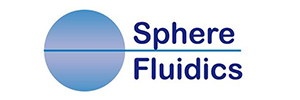Application note: Fast-track antibody discovery: a high-throughput method for identifying and isolating rare secreting cells
Published: 22 September 2022
Share this post
- Like
- Digg
- Del
- Tumblr
- VKontakte
- Buffer
- Love This
- Odnoklassniki
- Meneame
- Blogger
- Amazon
- Yahoo Mail
- Gmail
- AOL
- Newsvine
- HackerNews
- Evernote
- MySpace
- Mail.ru
- Viadeo
- Line
- Comments
- Yummly
- SMS
- Viber
- Telegram
- Subscribe
- Skype
- Facebook Messenger
- Kakao
- LiveJournal
- Yammer
- Edgar
- Fintel
- Mix
- Instapaper
- Copy Link
Discover how picodroplet microfluidic technologies can identify and isolate ‘hit’ cells, quantify varying concentrations of antigen-specific antibodies and much more.
Highly efficacious immunoglobulin-based drugs have been developed via the antibody-producing B cells of the mammalian immune system. However, finding rare cells with the right characteristics is challenging.
Semi-automated technologies such as cell sorting, colony picking and cell-in-well imagers are used to screen and isolate rare antigen‑specific producing cells, but they are not without their limitations. Fully integrated platforms based on picodroplet microfluidic technologies offer an efficient and cost-effective screening method to analyse a heterogeneous B cell or hybridoma population and identify target‑specific variants in a high-throughput manner.
This study shows the method by which an automated platform screens millions of primary B cells or hybridomas for secreted immunoglobulin, identifies and sorts the antigen-specific candidates and then dispenses them into 96- or 384-well microtiter plates with visual proof-of-cell number, through high‑quality imaging (Figure 1).




